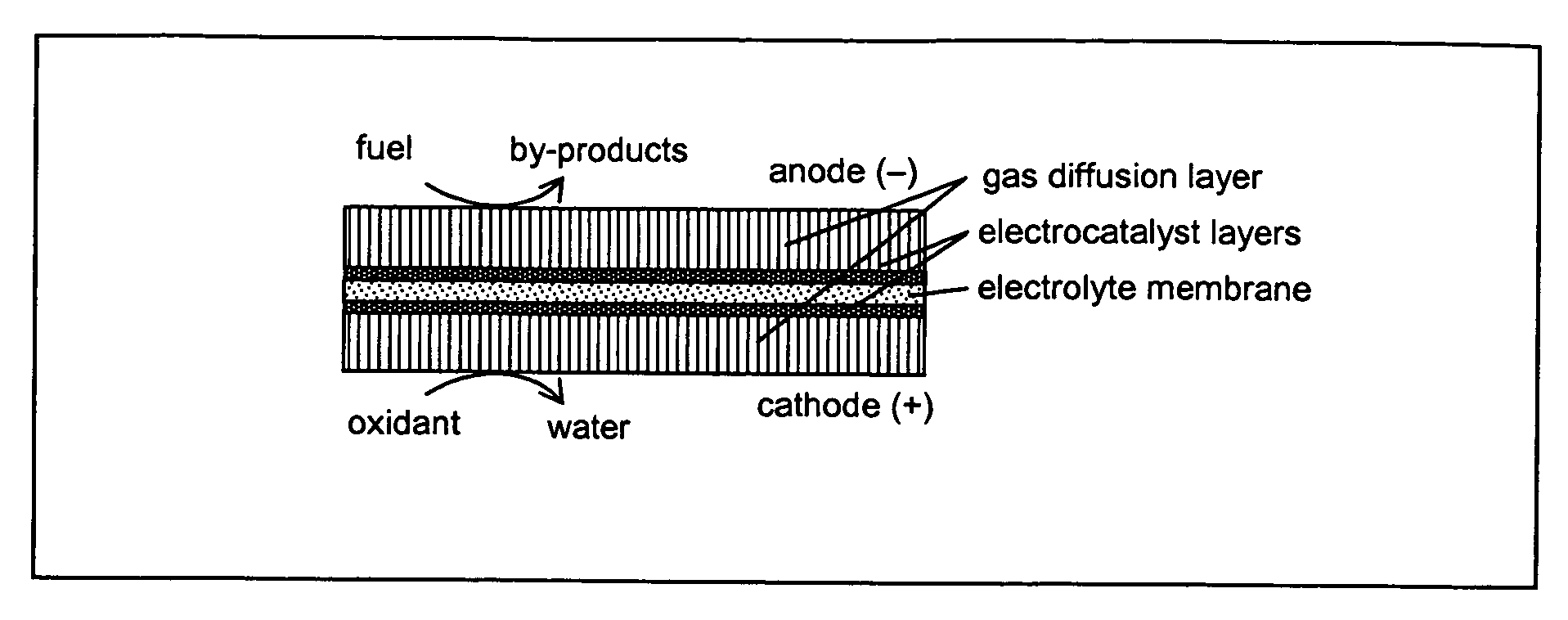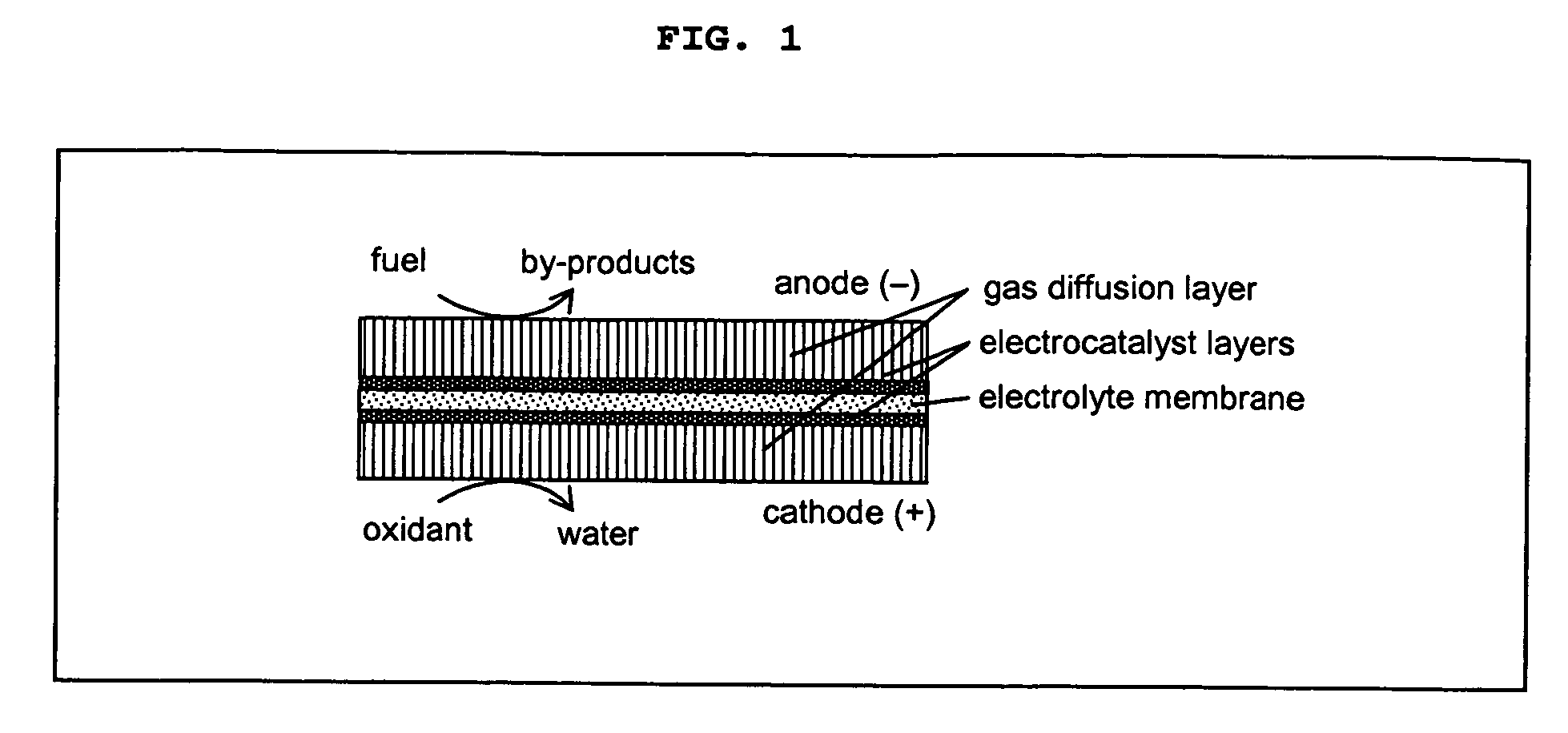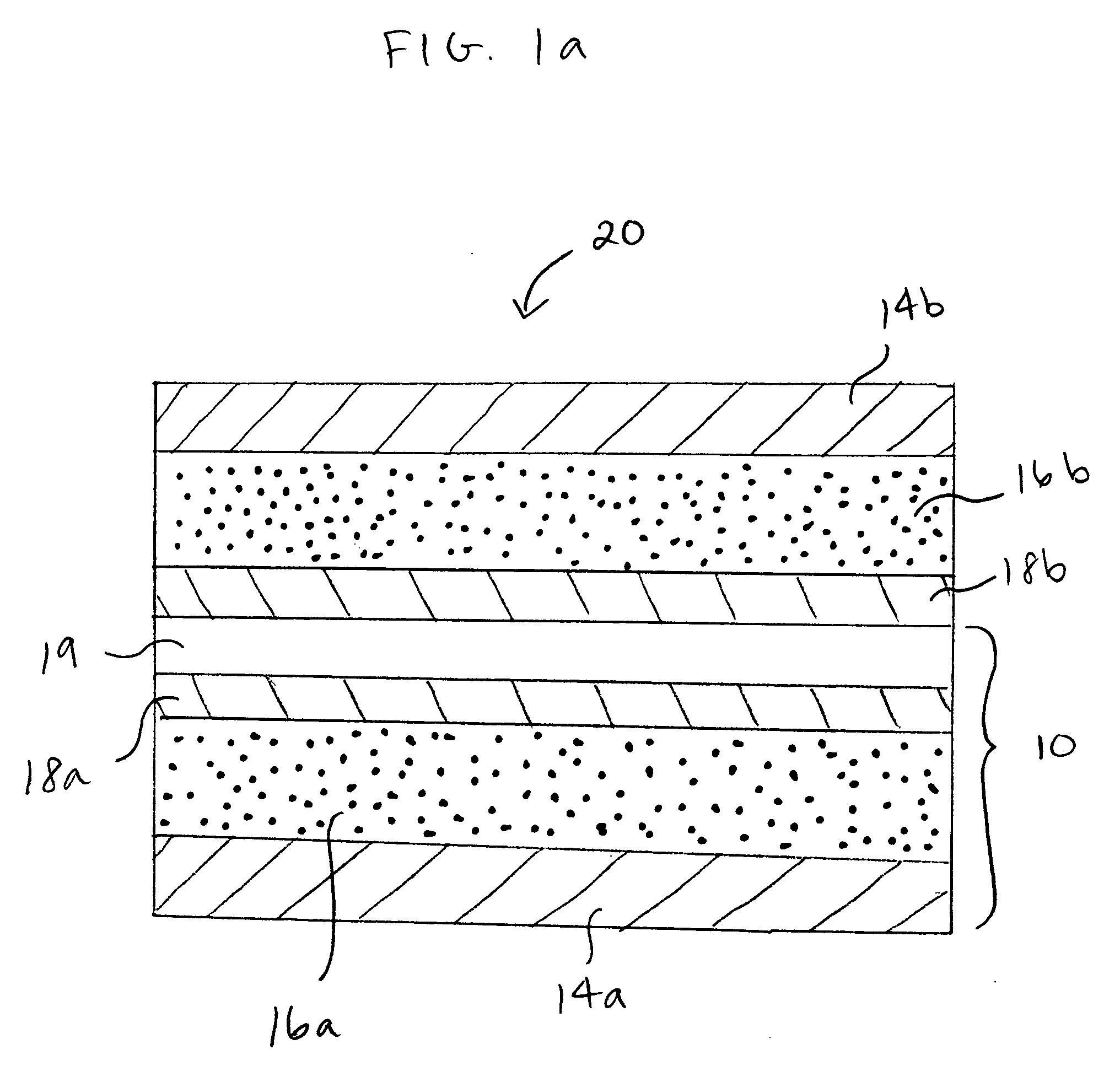Processing techniques for the fabrication of solid acid fuel cell membrane electrode assemblies
a technology of fuel cell membrane electrodes and processing techniques, which is applied in the direction of cell components, final product manufacturing, sustainable manufacturing/processing, etc., can solve the problems of unique capabilities and limitations of each fuel cell, and achieve the effect of high proton conductivity
- Summary
- Abstract
- Description
- Claims
- Application Information
AI Technical Summary
Benefits of technology
Problems solved by technology
Method used
Image
Examples
example 1
[0081] A saturated solution of CsH2PO4 in water having a concentration greater than 4 M was injected with a syringe into a methanol solvent while being agitated by an ultra-sonicator causing massive precipitation of CsH2PO4 particles having sizes ranging from 1 to 10 microns. After allowing the particles to settle for about 1 day, the methanol was poured off. This was repeated twice more. The CsH2PO4 particles were then decanted with toluene three times. The resulting CsH2PO4 fine particles were then dried at 100 to 150° C.
example 2
[0082] A saturated solution of CsH2PO4 in water having a concentration greater than 4 M was sprayed through a flame having a temperature greater than 600° C. The water rapidly evaporated and nano-particles of CSPO3 formed via the reaction: CsH2PO4(aq)+heat→CSPO3(s)+H2O(q). The resulting nano-sized particles of CsPO3 were then placed in a humidified atmosphere having a pH2O greater than 0.3 atm at temperatures of 25 to 200° C. This caused a reverse reaction (or hydration) of the CsPO3 nano-particles, thereby forming nano-particles of CsH2PO4 via the reaction: CsPO3(s)+H2O(q)→CsH2PO4(s).
example 3
[0083] A powder of CsH2PO4 was mixed with high surface area SiO2. The SiO2 had a surface area of 350 to 400 m2 / g. The resulting mixture was then used to form the electrolyte layer, which was then deposited on the electrode by slurry casting. The powder was then uniaxially pressed at a pressure of 10 to 60 MPa into a dense (i.e. greater than 97%) electrolyte membrane and used as the electrolyte layer of a fuel cell.
PUM
 Login to View More
Login to View More Abstract
Description
Claims
Application Information
 Login to View More
Login to View More - R&D
- Intellectual Property
- Life Sciences
- Materials
- Tech Scout
- Unparalleled Data Quality
- Higher Quality Content
- 60% Fewer Hallucinations
Browse by: Latest US Patents, China's latest patents, Technical Efficacy Thesaurus, Application Domain, Technology Topic, Popular Technical Reports.
© 2025 PatSnap. All rights reserved.Legal|Privacy policy|Modern Slavery Act Transparency Statement|Sitemap|About US| Contact US: help@patsnap.com



